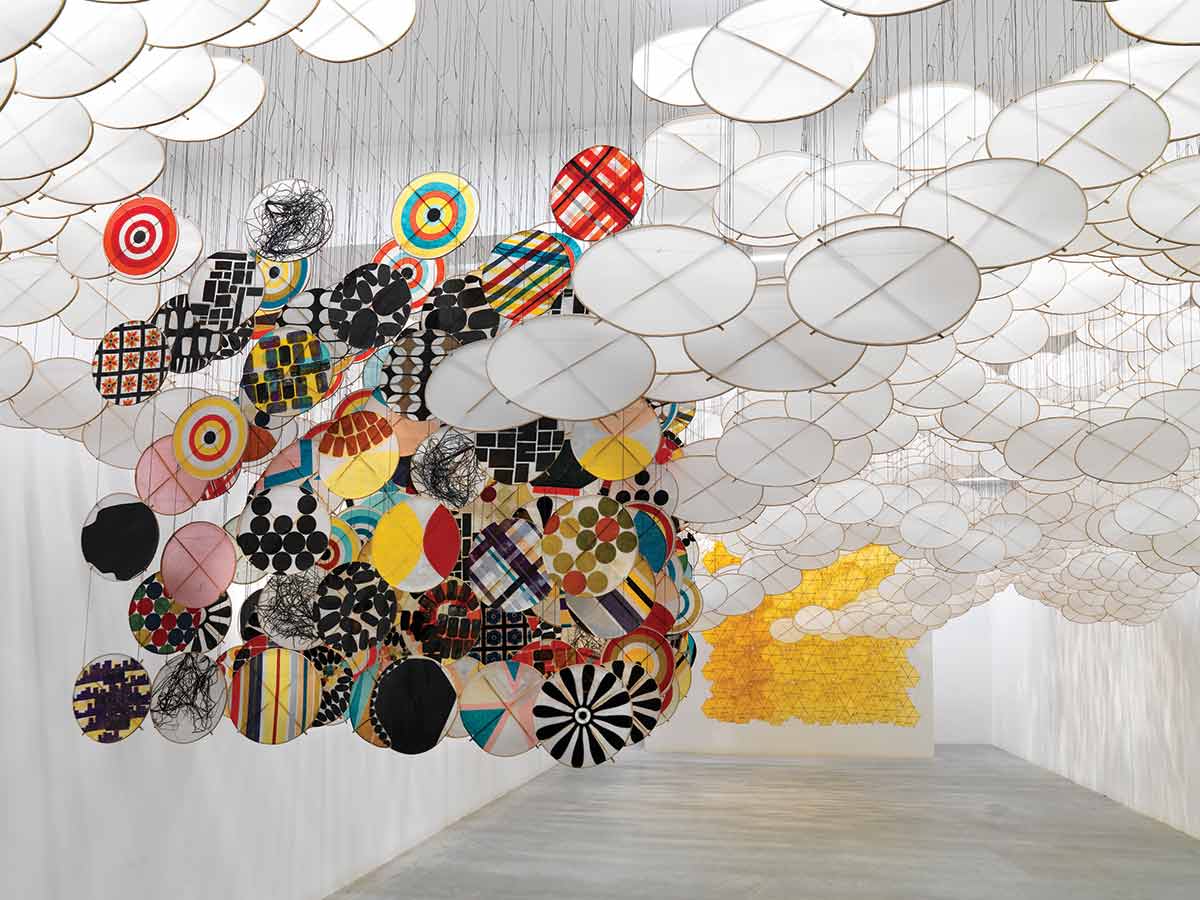Art has surrounded Jacob Hashimoto his entire life. Although he enjoyed drawing and other art-related activities in his youth, he never planned to fully envelop himself in the art world quite like those around him. His mother studied the field in college, and developed her own studio, where young Jacob would partake in these very activities, gaining an early artistic education. Despite his initial reluctance, Hashimoto soon found himself applying to the School of the Art Institute of Chicago, transforming what was once a leisurely activity into a passionate vocation — one he has maintained, to great acclaim, for over two decades.

Early in his career, Hashimoto gradually shifted away from strictly painting to abstract sculptural work, as the latter began to greatly inspire him and provided a greater platform for expressing ideas.
Hashimoto specializes in drawing and sculpture, deftly combining these two methods in his exhibition entitled “The Other Sun,” which is now on view at both the University Museum and Rowan Oak. “The Other Sun” operates on a continuum with Hashimoto’s previous and subsequent works, in the sense that it captures his unique style — comprising thousands of colorful and intricate kite-like discs — as well as being emblematic of the themes and emotions his artwork explores.
“The Other Sun,” initially unveiled in 2012, was conceived at a very specific point in history.
Hashimoto became particularly inspired by open-world videogames, specifically Minecraft, in the early part of the previous decade, linking this newfound inspiration — virtual landscapes — with the 3D coordinate layouts and landscapes of his exhibition artwork, as well as exploring the central relationship between the two approaches.
“Really interesting landscape work is not done in painting anymore. It’s done in the digital world,” Hashimoto said.
While intrinsically linked to the time and culture in which it was released, “The Other Sun” remains timeless, which is a key quality Hashimoto prides himself on with every piece he creates.
“It’s doing something different than I thought at the time when I made it, but I think that’s what makes good artwork — it has its own life in the world,” Hashimoto said.
This timelessness, in tandem with the notion of accessibility is what transforms Hashimoto’s work into something truly extraordinary.
“My aim is to create a bridge to a language that is familiar to everybody,” Hashimoto said. “Art that can speak on many different levels — it can be just a beautiful object, it can be an object that represents data systems, it can be an object that references landscaping or it can just be something you go to and hang out and relax with in-between classes.”
While “The Other Sun” remains intellectually and emotionally accessible, Hashimoto sought to make the piece physically accessible, thus leading to its inclusion in Oxford. In fact, the idea was originally suggested by Erin O’Hara, Jacob’s studio manager, believing “The Other Sun” to be a wonderful addition to the ever-growing art community in Oxford.
“It’s interested in opening itself to a narrative that the audience brings to it, no matter if it’s somebody from Mississippi or somebody from Croatia or my parents in Walla Walla, Washington,” Hashimoto said. “Now, in the Museum, it has a whole new meaning. That relationship is completely different, and yet you are bringing your own information to it, your own memories, your own lived experience. If people don’t glom their own experience onto it, it becomes irrelevant.”
In 2014, “The Other Sun” was included in a larger retrospective of Hashimoto’s work, entitled “Gas Giant,” serving as one vital piece amidst a greater tapestry of similar exhibitions. Yet, despite this retrospective, previous and ensuing museum showings, Hashimoto maintains that he would not create “The Other Sun” any differently in 2021, believing the exhibition to be of a very specific point both in cultural history and his own personal history.
“The Other Sun” is on view both at the University Museum and Rowan Oak. Tickets and other information on tickets, the works of art, the artist and how you can see them can be found on the University Museum’s and Rowan Oak’s websites.


























